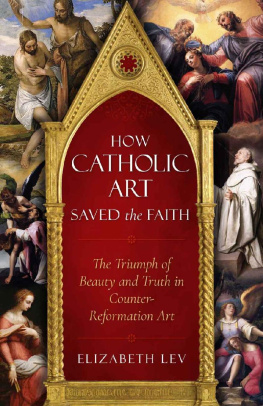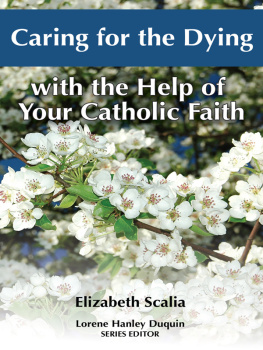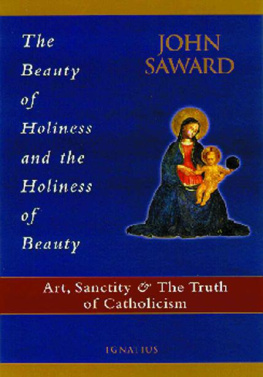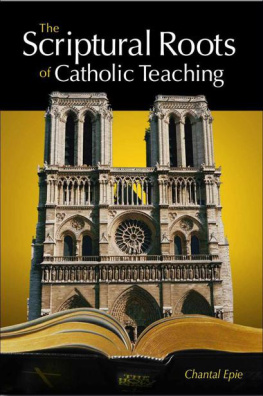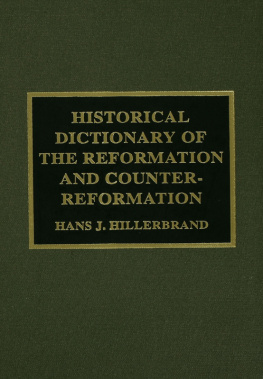Elizabeth Lev - How Catholic Art Saved the Faith: The Triumph of Beauty and Truth in Counter-Reformation Art
Here you can read online Elizabeth Lev - How Catholic Art Saved the Faith: The Triumph of Beauty and Truth in Counter-Reformation Art full text of the book (entire story) in english for free. Download pdf and epub, get meaning, cover and reviews about this ebook. year: 2019, publisher: Sophia Institute Press, genre: Religion. Description of the work, (preface) as well as reviews are available. Best literature library LitArk.com created for fans of good reading and offers a wide selection of genres:
Romance novel
Science fiction
Adventure
Detective
Science
History
Home and family
Prose
Art
Politics
Computer
Non-fiction
Religion
Business
Children
Humor
Choose a favorite category and find really read worthwhile books. Enjoy immersion in the world of imagination, feel the emotions of the characters or learn something new for yourself, make an fascinating discovery.
- Book:How Catholic Art Saved the Faith: The Triumph of Beauty and Truth in Counter-Reformation Art
- Author:
- Publisher:Sophia Institute Press
- Genre:
- Year:2019
- Rating:4 / 5
- Favourites:Add to favourites
- Your mark:
- 80
- 1
- 2
- 3
- 4
- 5
How Catholic Art Saved the Faith: The Triumph of Beauty and Truth in Counter-Reformation Art: summary, description and annotation
We offer to read an annotation, description, summary or preface (depends on what the author of the book "How Catholic Art Saved the Faith: The Triumph of Beauty and Truth in Counter-Reformation Art" wrote himself). If you haven't found the necessary information about the book — write in the comments, we will try to find it.
Elizabeth Lev: author's other books
Who wrote How Catholic Art Saved the Faith: The Triumph of Beauty and Truth in Counter-Reformation Art? Find out the surname, the name of the author of the book and a list of all author's works by series.
How Catholic Art Saved the Faith: The Triumph of Beauty and Truth in Counter-Reformation Art — read online for free the complete book (whole text) full work
Below is the text of the book, divided by pages. System saving the place of the last page read, allows you to conveniently read the book "How Catholic Art Saved the Faith: The Triumph of Beauty and Truth in Counter-Reformation Art" online for free, without having to search again every time where you left off. Put a bookmark, and you can go to the page where you finished reading at any time.
Font size:
Interval:
Bookmark:
ELIZABETH LEV
HOW
CATHOLIC ART
SAVED the FAITH
The Triumph of
Beauty and Truth in
Counter-Reformation Art
Sophia Institute Press
Manchester, New Hampshire
Copyright 2018 by Elizabeth Lev
Printed in the United States of America. All rights reserved.
Cover design by LUCAS Art & Design, Jenison, MI,
in collaboration with Perceptions Design Studio.
On the cover: Paolo Veronese, Coronation of the Virgin (1955), Web Gallery of Art; Alonso Cano, The Vision of St. Bernard (ca. 1650), Web Gallery of Art; Alonso Cano, Saint John the Evangelists Vision of Jerusalem (16361637), Web Gallery of Art; Jacopo Ligozzi, Agony in the Garden (ca. 1587), Web Gallery of Art; Giorgio Vasari, Annunciation (15641567), Web Gallery of Art; Paolo Veronese, The Baptism of Christ , classicpaintings / Alamy Stock Photo (F663BK).
Scripture quotations have been taken from the Revised Standard Version of the Bible: Catholic Edition, copyright 1965, 1966 the Division of Christian Education of the National Council of the Churches of Christ in the United States of America. Used by permission. All rights reserved.
Excerpts from the English translation of the Catechism of the Catholic Church for the United States of America copyright 1994, United States Catholic Conference, Inc. Libreria Editrice Vaticana. English translation of the Catechism of the Catholic Church: Modifications from the Editio Typica copyright 1997, United States Catholic Conference, Inc. Libreria Editrice Vaticana.
No part of this book may be reproduced, stored in a retrieval system, or transmitted in any form, or by any means, electronic, mechanical, photocopying, or otherwise, without the prior written permission of the publisher, except by a reviewer, who may quote brief passages in a review.
Sophia Institute Press
Box 5284, Manchester, NH 03108
1-800-888-9344
www.SophiaInstitute.com
Sophia Institute Press is a registered trademark of Sophia Institute.
Library of Congress Cataloging-in-Publication Data
Names: Lev, Elizabeth, author.
Title: How Catholic art saved the faith : the triumph of beauty and truth in
Counter-Reformation art / Elizabeth Lev.
Description: Manchester, New Hampshire : Sophia Institute Press, 2018.
Includes bibliographical references.
Identifiers: LCCN 2018022456 ISBN 9781622826124 (pbk. : alk. paper)
Subjects: LCSH: Counter-Reformation and art. Aesthetics Religious
aspects Catholic Church.
Classification: LCC N7862 .L48 2018 DDC 246/.4 dc23 LC record available at https://lccn.loc.gov/2018022456
First printing
Introduction
Introduction

Caravaggio may seem the most unlikely choice to spearhead a public-relations campaign for the Catholic Church. This aggressive, unconventional artist rarely followed rules whether legal or artistic and was more frequently under arrest than in Eucharistic adoration. Yet this brilliant painter joined several other misfit artists hypochondriac Barocci, alcoholic Annibale Carracci, gritty Ribera, and scandal-ridden Artemisia Gentileschi to become the visual-arts SWAT team of the Catholic Church in an age of crisis, the post-Reformation era.
A dark and divisive cloud swept through Europe in the wake of October 31, 1517, when Martin Luthers Ninety-Five Theses challenged almost every aspect of the Faith. Confusion reigned supreme regarding everything from the sacraments, which accompanied human beings from birth to death, to the saints, who set daily examples in the liturgical calendar. Was Jesus present in the Eucharist? Could the procession of historical Christian heroes in Heaven assist the living? Was Marys role in the story of salvation solely that of the God bearer, with no lasting influence over the Church?
As these questions of faith took a geopolitical turn toward issues of power, the debate grew increasingly ugly. Harsh language disseminated through the printing press was supplemented by vicious images, such as Lucas Cranachs Passionary of Christ and The Antichrist series from 1521, where thirteen woodcuts showing scenes from the life of Christ were contrasted with those of the Antichrist, represented as the Roman pontiff. Violence escalated, dialogue broke down, and brother turned against brother as the wars of religion began. What could calm these storm-tossed waters?
The arts.
Pope Emeritus Benedict XVI repeated both as cardinal and as Roman pontiff that art and the saints are the greatest apologetic for our faith. The Catholic Church of the Counter-Reformation relied on this premise as it unleashed a wave of glorious examples of holiness as well as beautiful sacred art in opposition to the ugliness, confusion, betrayal, and loss rampant in that era. Artists, despite their personal obstacles toward sanctification, were recruited to teach, delight, and inspire through their gifts, and complement the hallowed lives of Charles Borromeo, Ignatius of Loyola, Philip Neri, Thomas More, Teresa of Avila, and Jane Frances de Chantal, who shone as examples of spiritual beauty.
Initially perhaps, self-interest may have motivated artists. The menace of iconoclasm, a side effect of the Protestant Reformation, saw paintings, statues, and relics destroyed in several pockets of Northern Europe, and was gaining ground in the south. Painters and sculptors were in part to blame for the hostility toward images. Enamored of their own prowess, some artists had lost sight of the holy stories in favor of provocation, often of a lascivious nature, or else a vain virtuosity, arraying a dizzying number of figures but masking the sacred message. This period, dubbed ineffectually by art historians as Mannerism, gave the world the notion of art for arts sake that would take on a life of its own in the eighteenth century. For the post-Reformation era, however, the watchword was something else entirely: art for faiths sake.
It is not surprising that, faced with promiscuous or confusing images, some Catholic prelates questioned the wisdom of continued art patronage while the Church was preparing to reexamine her teachings in the Council of Trent. Music, literature, and the visual arts were under scrutiny as to whether the pleasure they provided was merely profane delight instead of a stimulus toward piety and eternal salvation.
There was much to discuss in the Council of Trent, from sacraments to saints and Magisterium to mission. The two decades of intermittent meetings from 1545 to 1563 spanned five popes, the birth of ten religious orders, more than one hundred officially recognized martyrs, and the repercussions of the astounding volte-face of King Henry VIII, who decreed himself the head of the English church in 1534.
The Tridentine fathers, truth be told, spent far less time discussing art than art historians would like, but their decrees, of the twenty-fifth and final session of December 4, 1563, reaffirmed the long-standing relationship between art and faith, essentially restating the points made at the Second Council of Nicaea in 787. The Tridentine decrees were deliberated along with the role of relics, a precursor to Benedict XVIs observations on the power of the saintly and artistic beauty.
The bishops shall carefully teach this: that, by means of the histories of the mysteries of our Redemption, portrayed by paintings or other representations, the people is instructed, and confirmed in [the habit of] remembering, and continually meditating upon the articles of faith; as also that great profit is derived from all sacred images, not only because the people are thereby admonished of the benefits and gifts bestowed upon them by Christ, but also because the miracles which God has performed by means of the saints, and their salutary examples, are set before the eyes of the faithful; so that they may give God thanks for those things, may order their own lives and manners in imitation of the saints, and may be excited to adore and love God, and to cultivate piety.Next pageFont size:
Interval:
Bookmark:
Similar books «How Catholic Art Saved the Faith: The Triumph of Beauty and Truth in Counter-Reformation Art»
Look at similar books to How Catholic Art Saved the Faith: The Triumph of Beauty and Truth in Counter-Reformation Art. We have selected literature similar in name and meaning in the hope of providing readers with more options to find new, interesting, not yet read works.
Discussion, reviews of the book How Catholic Art Saved the Faith: The Triumph of Beauty and Truth in Counter-Reformation Art and just readers' own opinions. Leave your comments, write what you think about the work, its meaning or the main characters. Specify what exactly you liked and what you didn't like, and why you think so.

